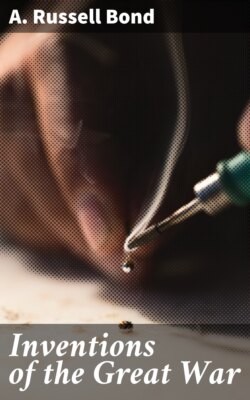Читать книгу Inventions of the Great War - A. Russell Bond - Страница 11
На сайте Литреса книга снята с продажи.
MINES AND COUNTER-MINES
ОглавлениеTable of Contents
In the earlier stages of the war it proved so impossible to capture a trench when it was well defended by machine-guns that efforts were made to blow up the enemy by means of mines. Tunnels were dug reaching out under the enemy's lines and large quantities of explosives were stored in them. At the moment when it was intended to make an assault, there would be a heavy cannonading to disconcert the enemy, and then the mine would be touched off. In the demoralizing confusion that resulted, the storming-party would sweep over the enemy. Such mines were tried on both sides, and the only protection against them was to out-guess the other side and build counter-mines.
If it were suspected, from the importance of a certain position and the nature of the ground, that the enemy would probably try to undermine it, the defenders would dig tunnels of their own toward the enemy at a safe distance beyond their own lines and establish listeners there to see if they could hear the mining-operations of their opponents. Very delicate microphones were used, which the listeners would place on the ground or against the walls of their tunnel. Then they would listen for the faintest sound of digging, just as a doctor listens through a stethoscope to the beating of a patient's heart or the rush of air through his lungs. When these listening-instruments picked up the noise of digging, the general direction of the digging could be followed out by placing the instrument at different positions and noting where the noise was loudest. Then a counter-mine would be extended in that direction, far enough down to pass under the enemy's tunnel, and at the right moment, a charge of TNT (trinitrotoluol) would be exploded, which would destroy the enemy's sappers and put an end to their ambitious plans.
A very interesting case of mining was furnished by the British when they blew up the important post of Messines Ridge. This was strongly held by the Germans and the only way of dislodging the enemy was to blow off the top of the ridge. Before work was started, geologists were called upon to determine whether or not the ground were suitable for mining-operations. They picked out a spot where the digging was good from the British side, but where, if counter-mines were attempted from the German side, quicksands would be encountered and tunneling of any sort would be difficult. The British sappers could, therefore, proceed with comparative safety. The Germans suspected that something of the sort was being undertaken, but they found it very difficult to dig counter-mines. However, one day their suspicions were confirmed, when the whole top of the hill was blown off, with a big loss of German lives. In the assault that followed the British captured the position and it was annexed to the British lines.
